
Being able to putt well consistently is a sure-fire way to improve your scoring on the golf course, and through our collection of the best ever putting tips you will find yourself making more birdies, more often.
Some of our top putting tips focus on your technique and stroke, while others hone in on your grip, strategy and practice routine. Allocating some time to your pursuit of putting perfection is essential, and these top tips and drills are a great place to start...
New balls please

To break the tension and frustration around putting, sometimes opting for some fun drills can alter your perception. Instead of golf balls, switch in some balls of different sizes to help you appreciate how it feels to hit a normal one.
Try out hitting some short putts with a tennis ball, and notice the difference in feel. This can also make the hole feel smaller, so that it looks bigger when you are actually playing on the course.
Practise one-handed

If you were to roll a golf ball across a putting green, you should notice some slack and a change of direction in the wrist and arm. This is the same release you want to feel in the right hand of your putting stroke (conventional grip).
If your stroke is rigid, you won't get the right levels of feel and this will usually result in inconsistent results. Roll a couple of balls, then use a one-handed (right) stroke to practice. You should notice the different feel. When you put your left hand back on the club, try to stick with that same sensation throughout.
Find the equator
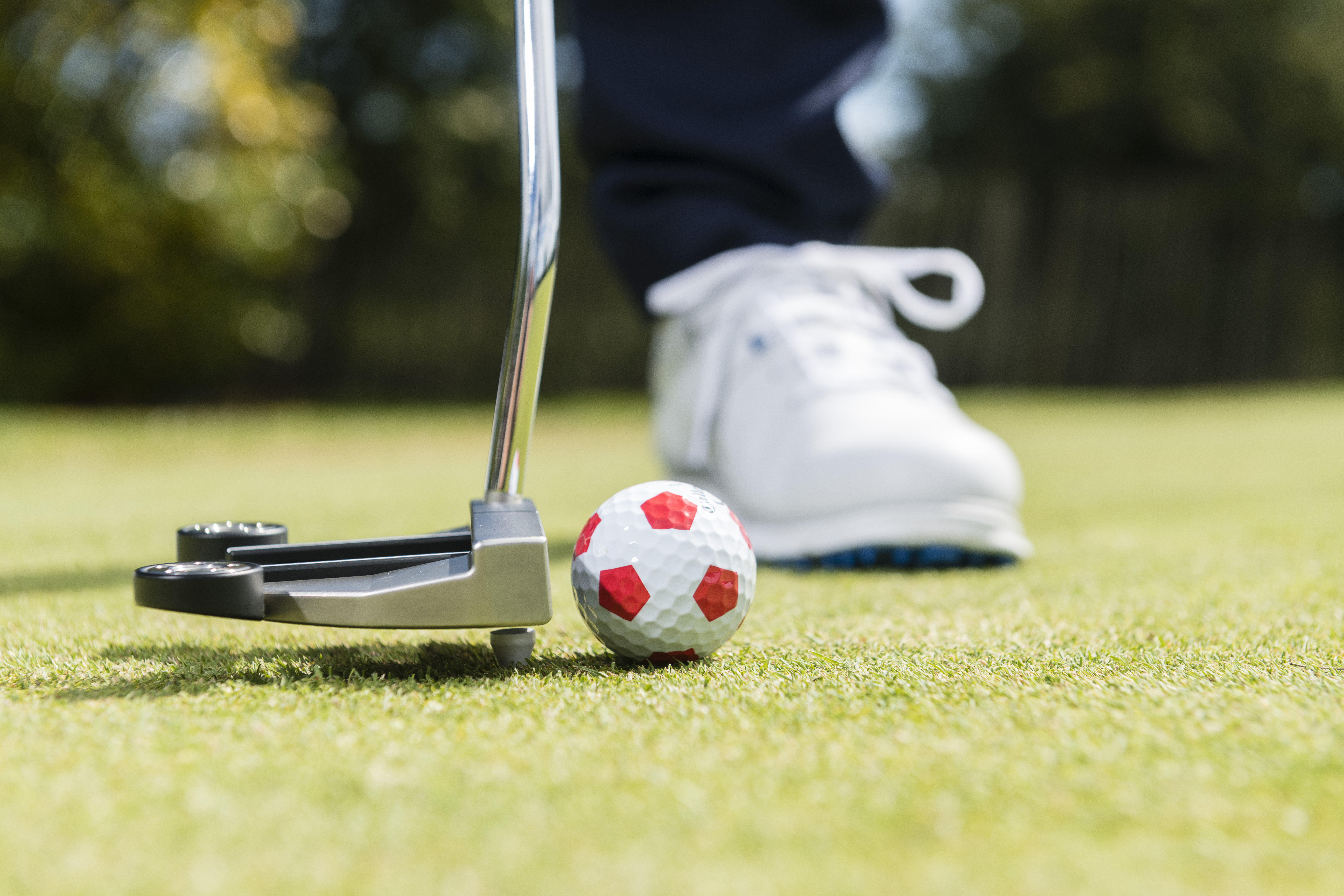
Getting a good strike on the equator of the golf ball will help to limit deviations in the roll of your putt. Often, amateur golfers consider horizontal contact with the putter, such as whether it comes out of the heel, toe or centre. Rarely do we consider the vertical contact, however, but this drill can help you to nail your strike with the putter.
Pop a tee into the ground behind the golf ball, protruding about half a centimetre. Place your putter on the tee behind the ball, make a stroke and try to miss the tee altogether. This will help you to improve your contact with the equator.
A quick nine-holes
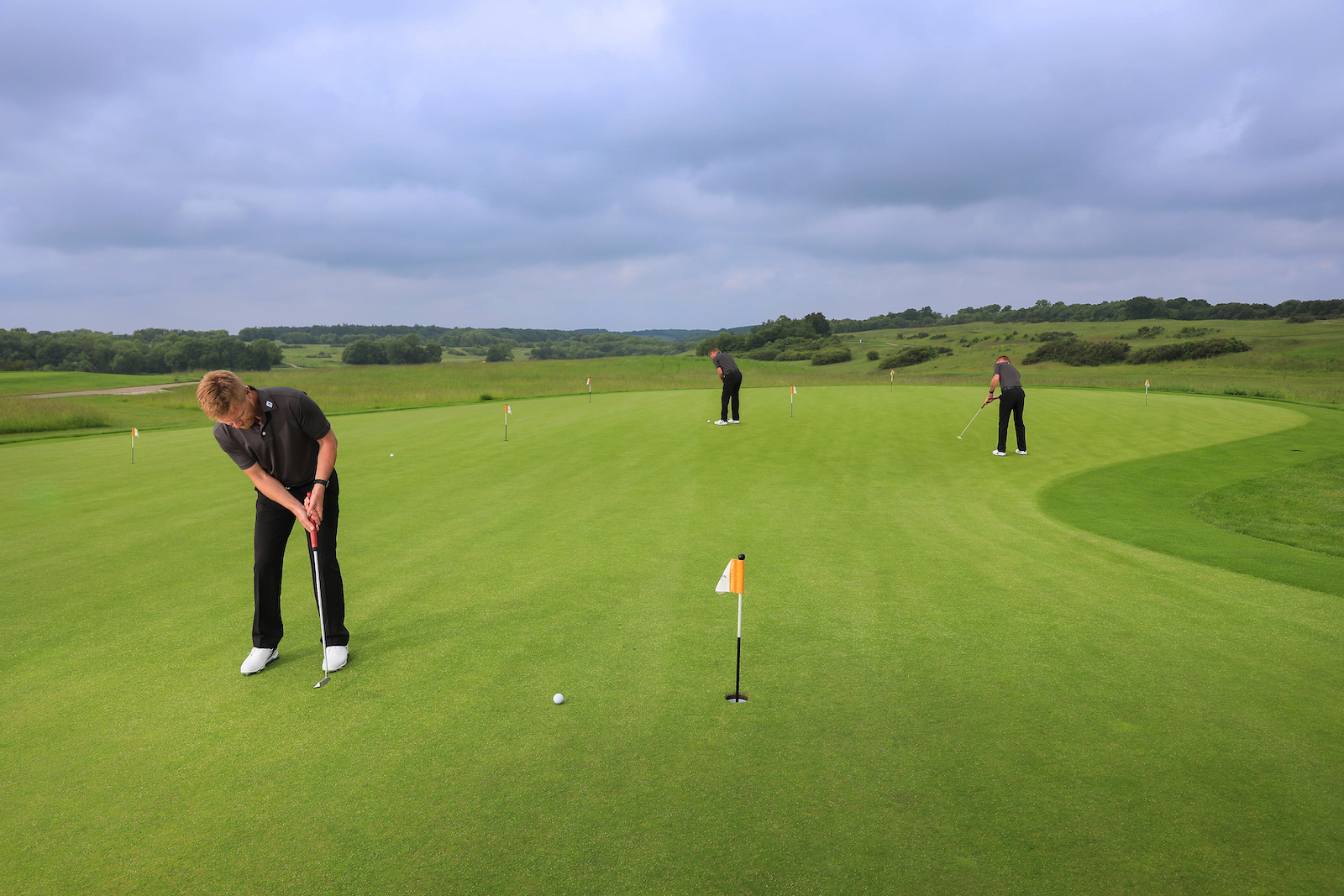
Going out on the putting drill and aimlessly hitting putts is rarely a good way to prepare. Adding some variety could help to maintain your interest and engage your brain with the challenges you might face on the course.
Why not try playing a 'quick nine holes' on the practice putting green, and set a target for how many putts you think you can complete the nine in. Repeat that process the next time you step onto the practice green and see if you can beat your score. The added element of pressure will help to keep you focused, while also improving your putting prowess.
Forget the hole

This might seem counter-intuitive, but removing the hole can help your putting. Place a ball or a tee around 10 to 15ft away, and try to putt three balls as close to your target as possible.
Repeating the stroke can help you to improve your feel, and by not going for the hole you can remove the negative thoughts around it potentially not dropping. Move onto a hole following this drill, and watch your putts go in more often.
Read beyond the hole too
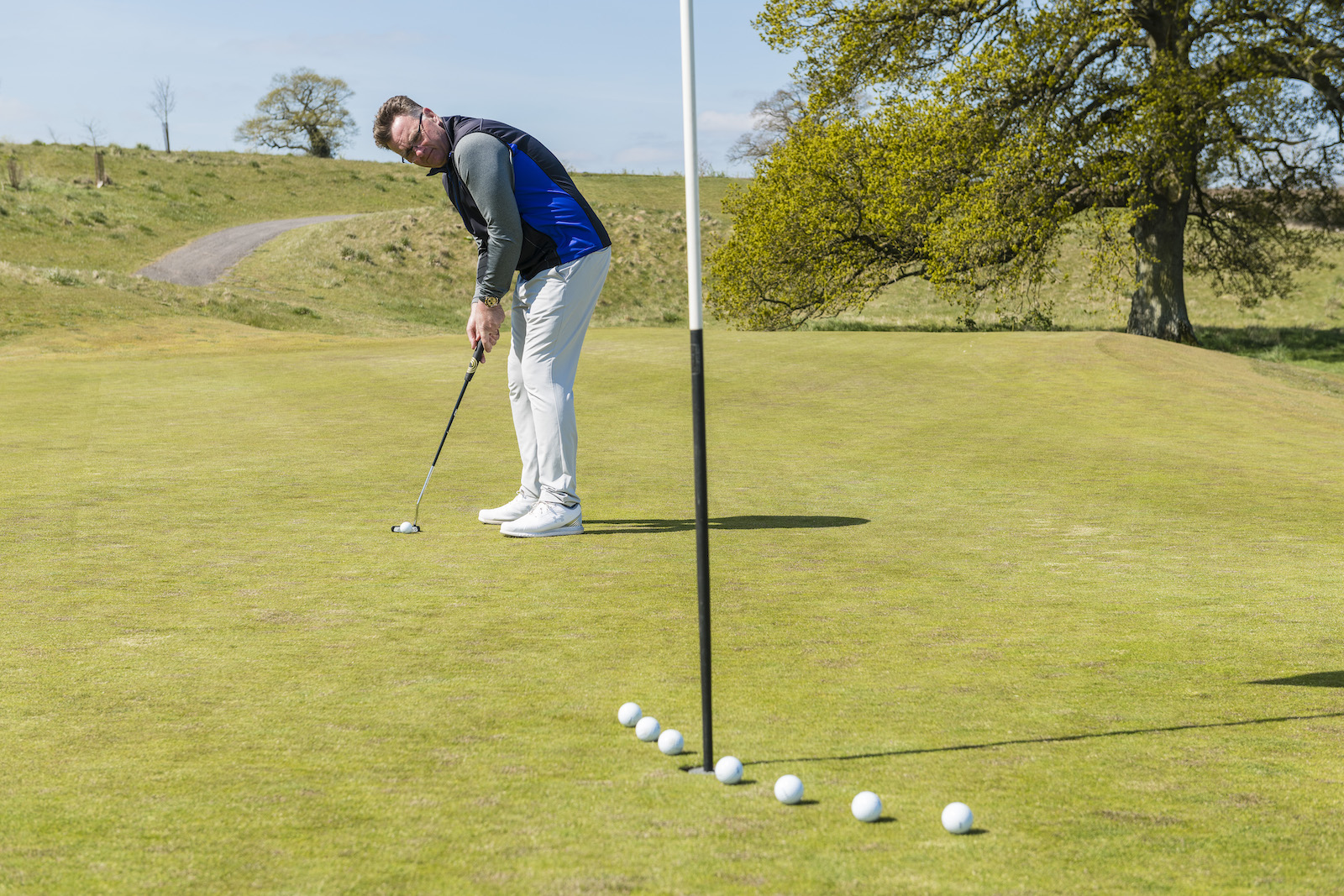
Reading the line of a putt towards the hole is a part of most amateur golfers preparation, but reading the line past the hole could also add value. If you are leaving the ball short, visualise where the ball would end up when running past the hole if you miss.
The hole is merely in the way on your line – it’s not the end of the journey – and factoring in the line beyond the hole too can encourage you to find the right pace to reach the hole.
Putting from the fringe
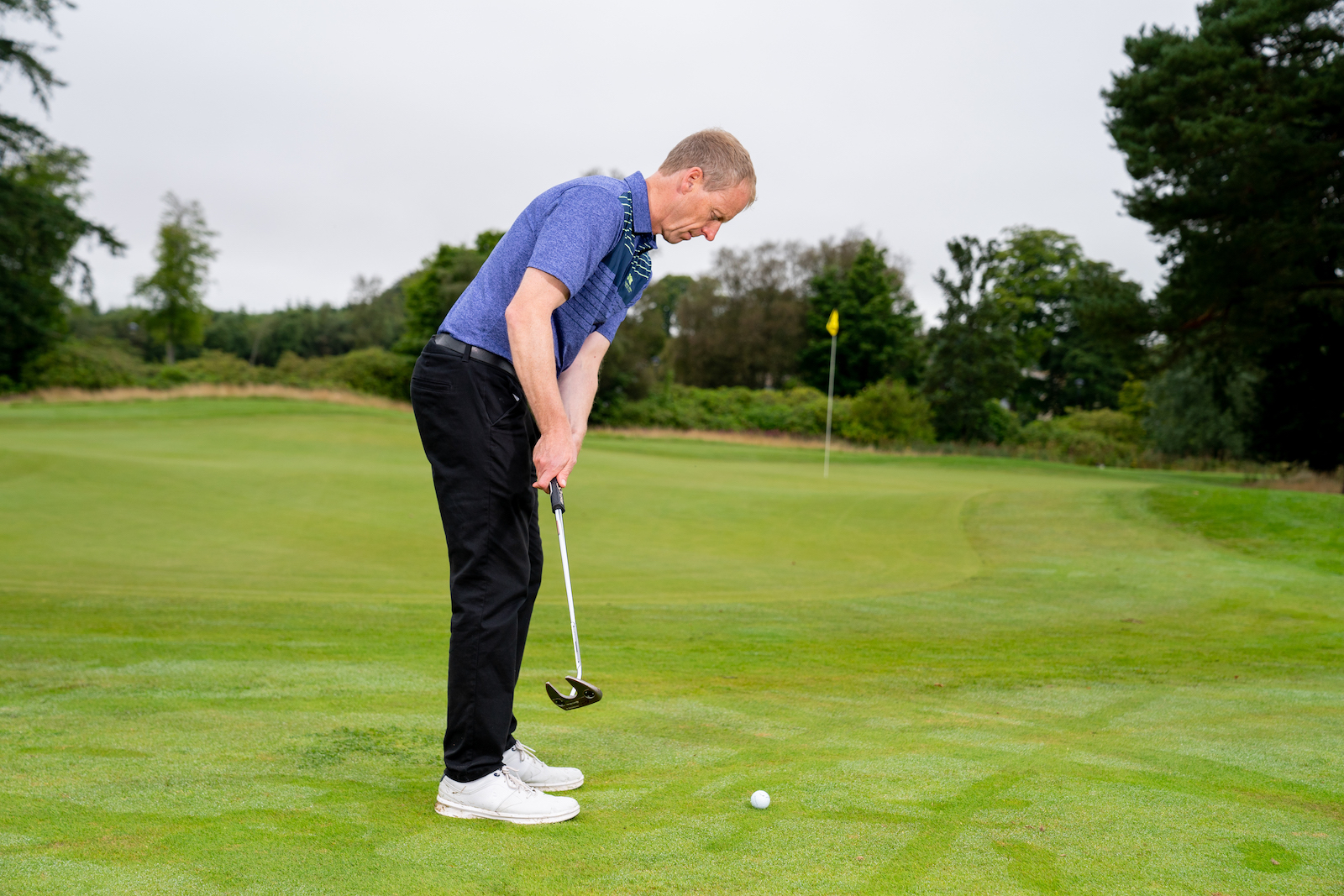
This is certainly a handy shot on firm links-type courses, but you must assess each situation carefully to gauge how good the fringe is and whether any wetness could make the overall putt tricky to judge, particularly when putting through quite a bit of fringe. But putting takes the club/turf interaction out of the equation, and most golfers strike putts better than chips. Add this shot to your practice regime, then take more practice swings than usual out on the course to really get a feel for what is needed.
Putt around the clock
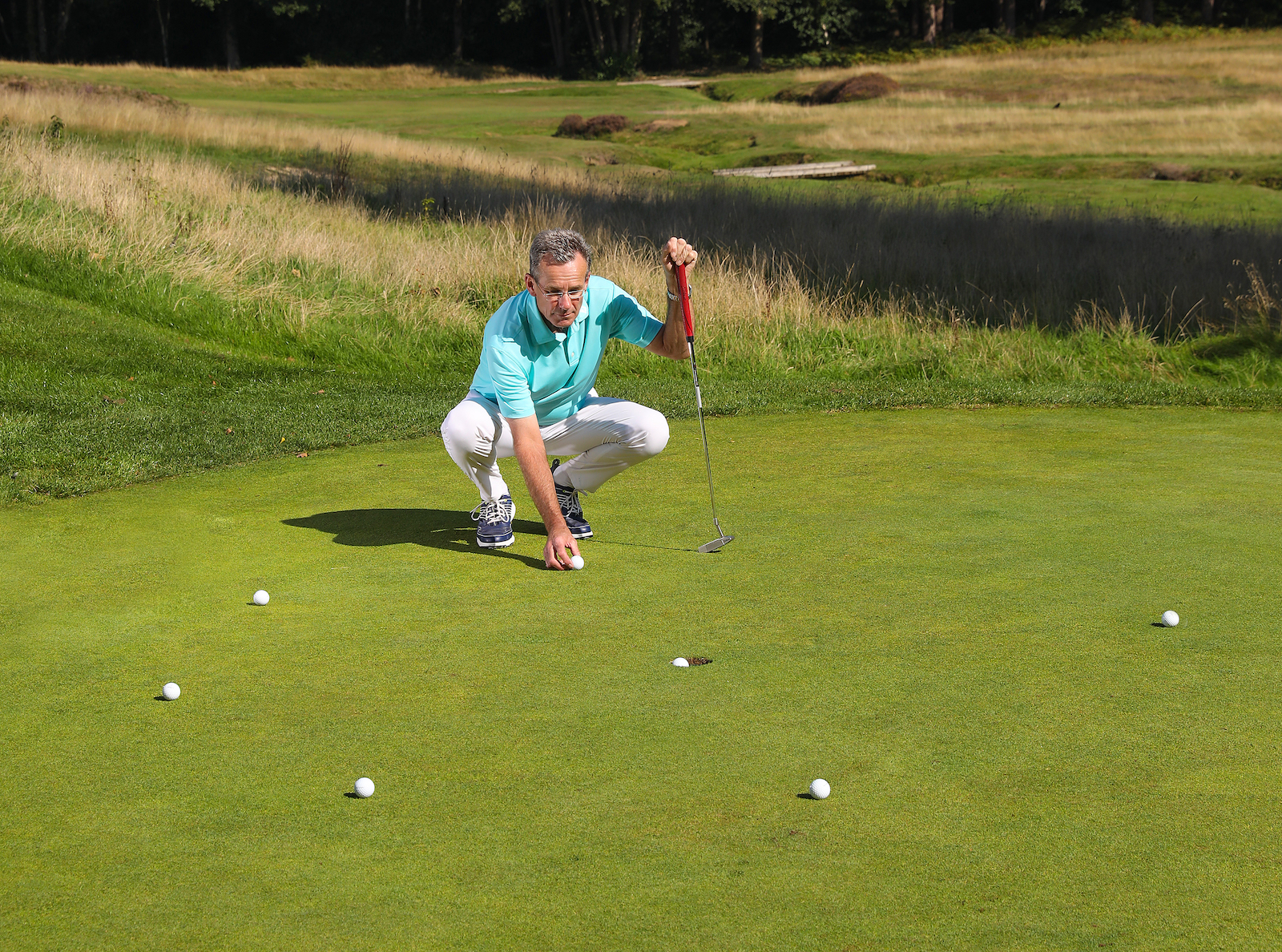
Round the clock drills traditionally focus on three feet but try adding another circle at five or six feet. See how many you can hole out of four or five balls and try to improve your success rate each time. Find somewhere where the putts break differently rather than all being dead-straight. Different breaks mean you have to think about more than just your stroke. To make this drill really effective, go through your normal pre-putt routine rather than just whizzing round without much thought.
The push drill
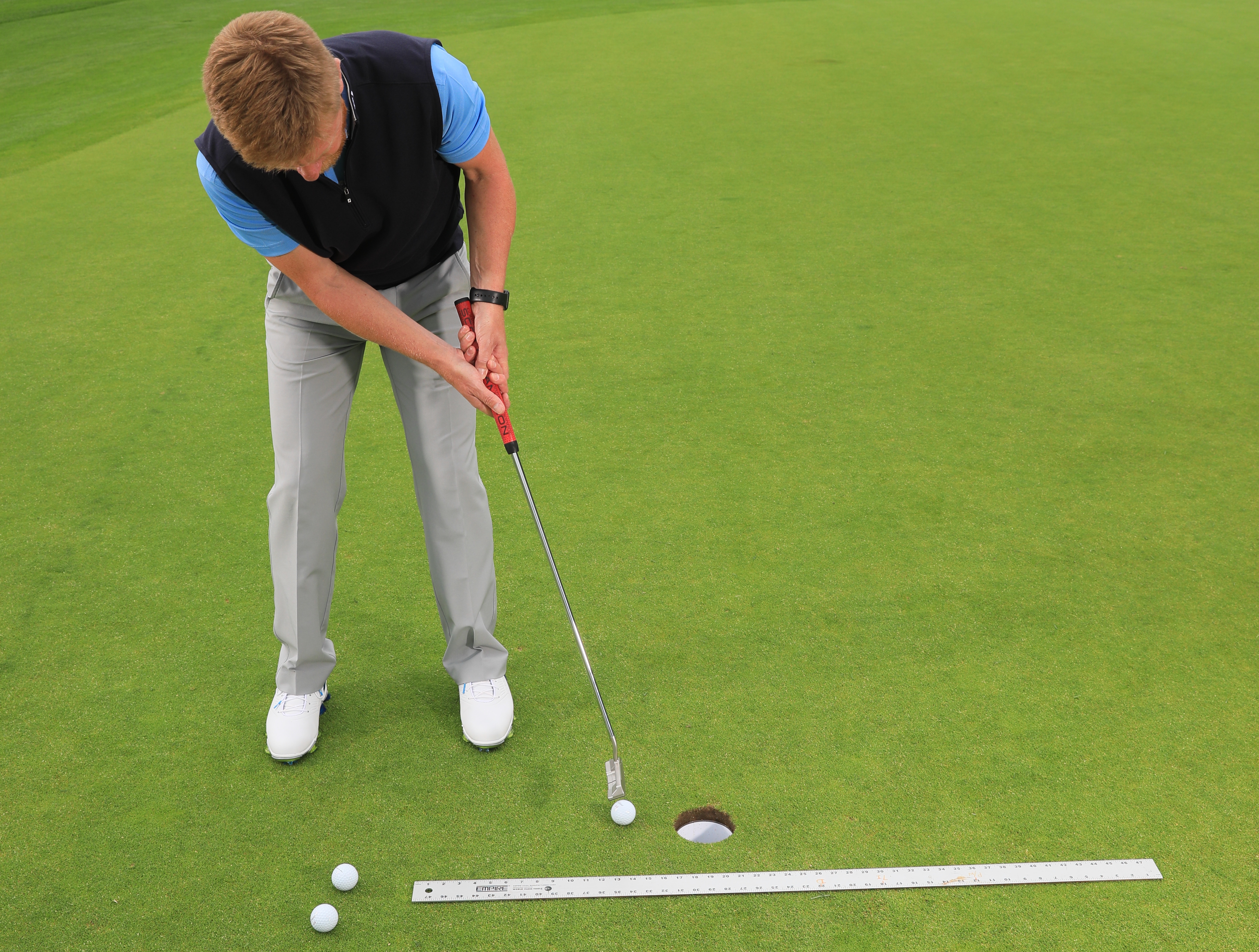
Many golfers tend to stab at the ball and don’t actually stroke through to the target. This drill encourages you to extend through to the hole. Set up for a little 18in putt and place the putter immediately behind the ball. Don’t make a backstroke but just push the ball through trying to maintain a square face. This gives you the feeling of the handle and clubhead moving toward the hole after impact. The putter should almost reach the hole as you push through.
Point of entry on breaking putts

Remember that on breaking putts, the ball will not be entering the front of the hole, but via one side or the other. You must work on your entry point, using something to help visualise that in practice. The little tool here does the job perfectly, but equally it could be a couple of tees forming an entry gate around the hole. The entry point might be at 4 o’clock relative to where you’re standing, or even 3 o’clock on big-breaking putts. But if you look only at the front of the hole, you’ll always miss breaking putts on the low side.
The pencil grip

The pencil grip as demonstrated here sees the lower hand working in a completely different fashion. It gives you the feeling of a much lighter grip in your right hand, with the palm working towards the target a little more. The idea is to stop the right hand dominating, keep the small-twitch muscles out of your stroke and utilise the big core muscles to control things. It also allows you to keep your right side more connected to your torso by tucking the right elbow in against your side.
One-to-two stroke length ratio
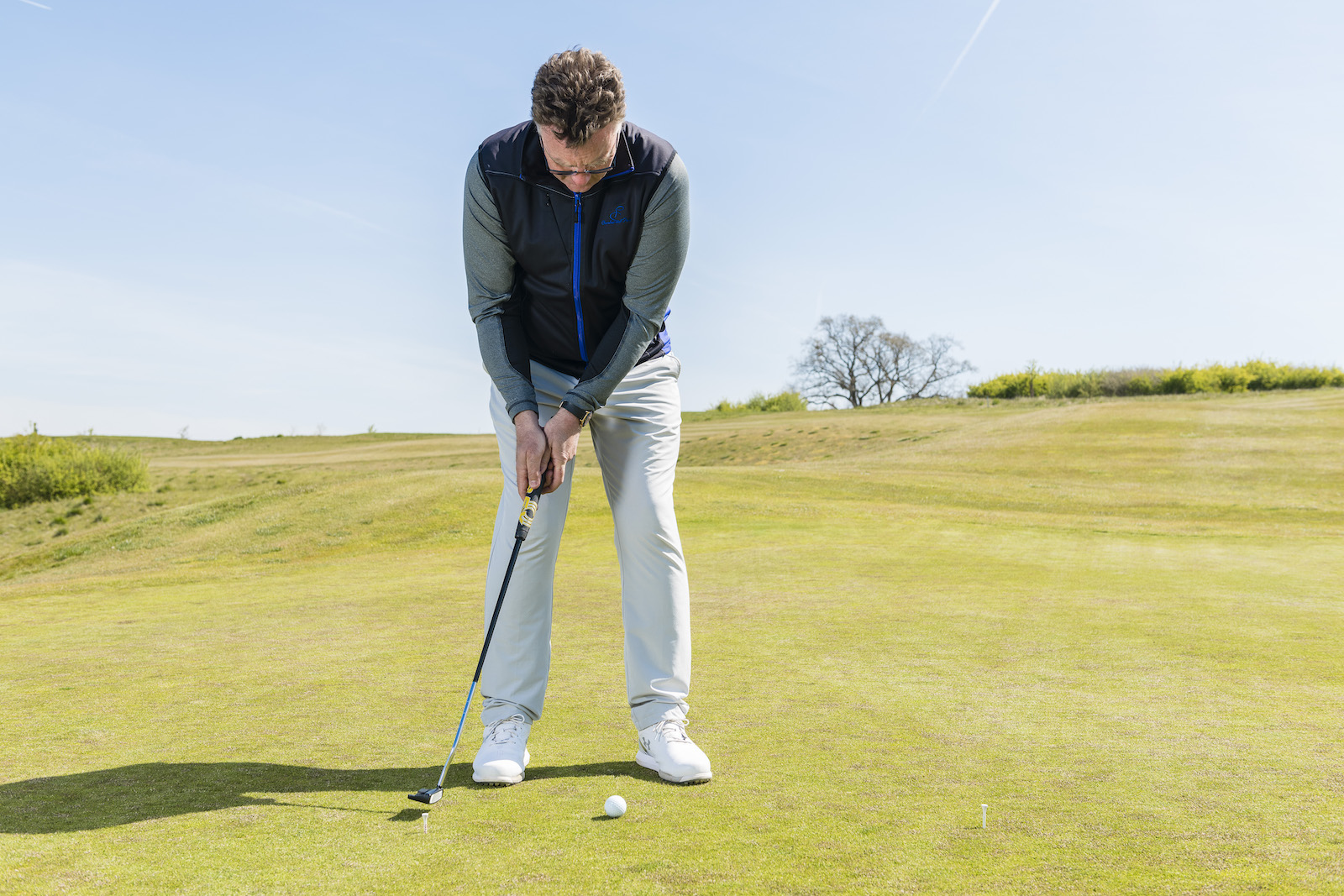
Your stroke length needs to match the length of the putt, so you have to vary backswing length. But you must still commit to it and keep the follow-through going through the ball. If you’re leaving putts short, increasing the length of your follow-through will pick your speed up and help get the ball to the hole. A one-to-two ratio (represented by the tees here) is good. Your follow-through should be almost double the length of your backswing allowing you to ‘collect’ the ball on the way through rather than hitting at it.
Narrow your focus
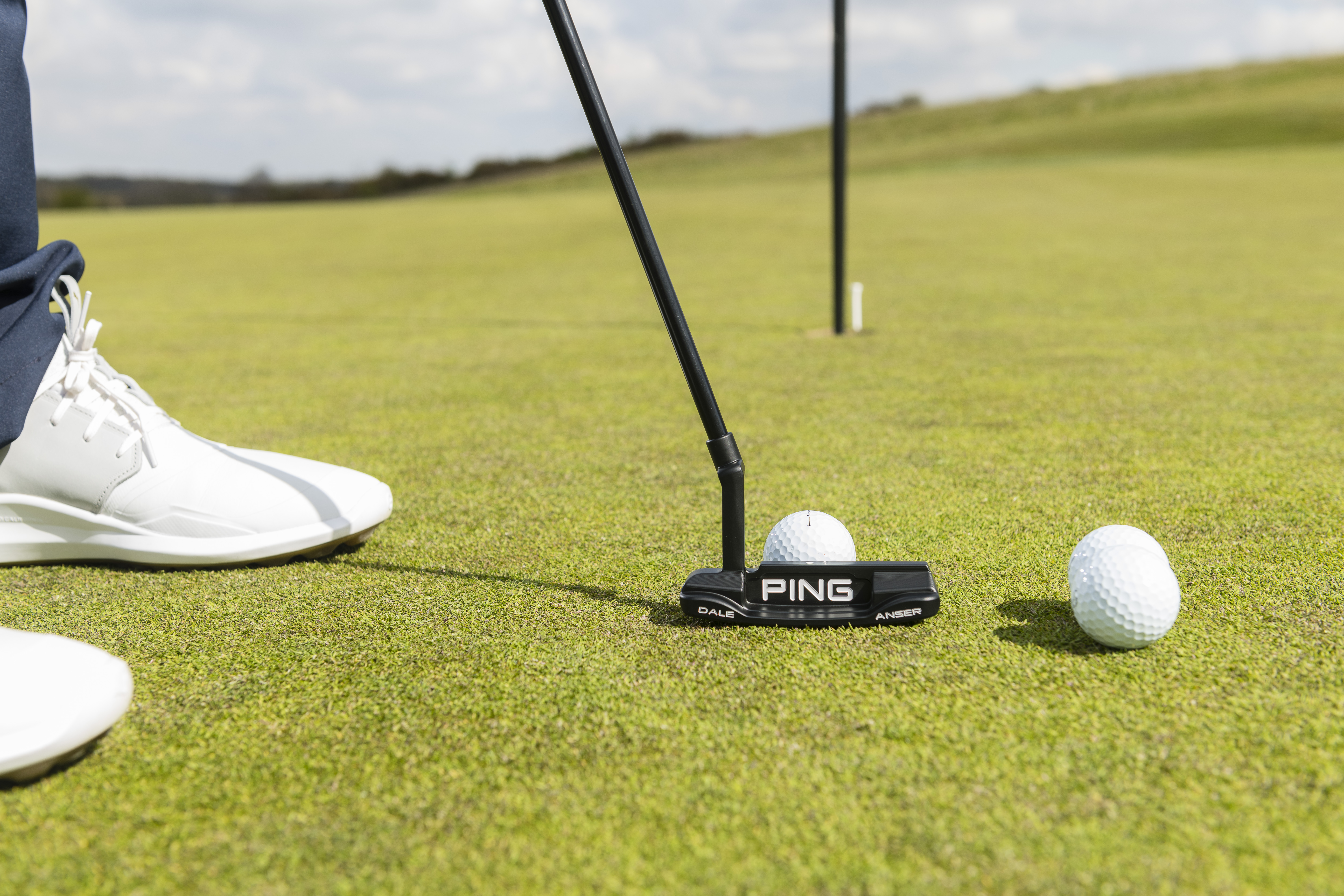
Many golfers are guilty of indecision about where to aim and how a short putt breaks, which leads to lack of commitment. A good practice drill is to choose your line then place a tee peg just behind the hole where you think you need to start your putt. As you walk in and take your stance, keep your focus on that tee peg. Picking a really small target from short range can help with your focus and engagement. The beauty is that you could miss your narrow target, yet still hole the putt because the hole is much bigger.
Look at the hole on practice strokes

What you do in your practice strokes is critical to long-range putting as it can improve your pace control and leave you facing fewer testing par saves. On long putts, try looking at the hole rather than the ground as you take your practice strokes beside your ball. With your target the focus of your attention it can really help you gauge how far back and through the putterhead has to go to get the ball close, or possibly even hole it!
Left hand below right
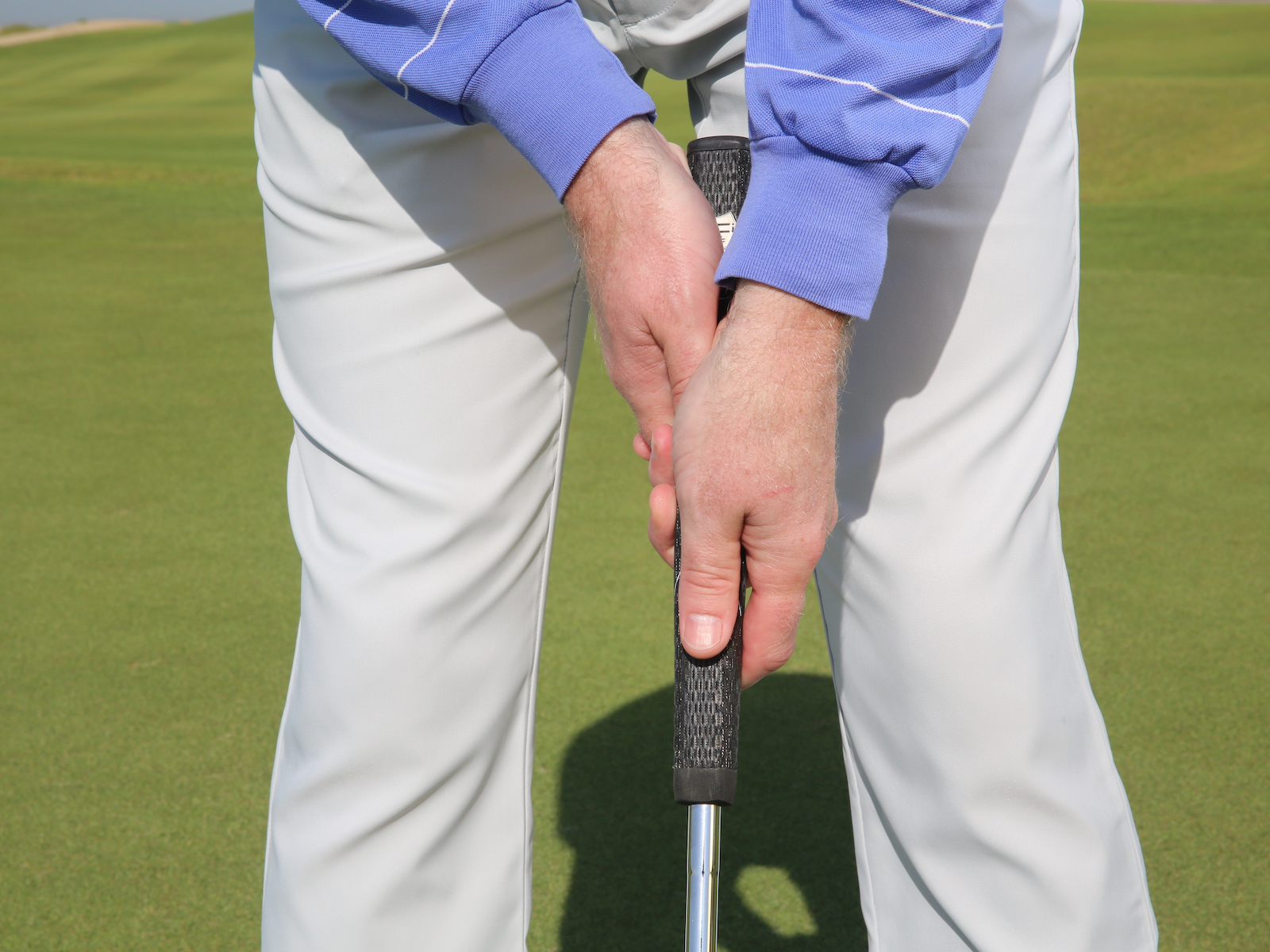
Many people now putt with the left hand below the right as this helps to neutralise the right hand. Because your left hand is further down the grip, it elongates the left arm, which almost becomes a continuation of the shaft and brings you added consistency as the shaft works with the left arm throughout. You will have to make some adjustments to your stroke from distance, though, because you’ve taken the right hand – and therefore the release – out of it. You’ll probably need to lengthen the stroke a little relative to a more orthodox grip.
Go to town on the read

Some people find it difficult to read greens, but if you were to give them a bucket and tell them to cover the green with as much water as possible, almost everybody would be able to go to the high spot and work out where the water would run to. Looking from behind the ball gives you an overall feel for the contours, then from halfway, you’re again looking at the contours, trying to pick out any slopes less obvious from further away. Closer to the hole, it’s about pinpointing the breaks that will take maximum effect as the ball loses pace.
The Blu Tack drill

This drill can really highlight precisely where you’re making contact and help you to focus on finding a more central strike every time. Just pop a little bit of Blu Tack on the toe and heel of the putter face to make the effective area of the face much smaller. If you make contact on the Blu Tack it will be completely dead and the ball won’t go anywhere, providing instant feedback as to whether or not you’ve found the centre of the putter blade.
The bigger picture

When it comes to reading greens, quite often don’t people don’t engage their golfing brains until the last moment. They get to their ball on the green and then try to take in all the information in the last 30 seconds. If you engage your golfing brain perhaps ten or 20 yards short of the green as you’re approaching it as here, you’ll start to get a feel for the tilt and general lie of the land. You’ll see a lot of tour pros eyeing the green up as they approach it.
Find the high point

Most golfers don’t allow enough break in their putts and this drill is all about reading the break better. Find a putt from about ten to 12 feet with some break in it, then spend time working out the high point of the break. Now lay an alignment stick or club down at that high point. The goal is to get your ball to almost shave the inside of the stick before breaking back towards hole. This will give you a clearer visual picture of the break in a putt.
Speed station drill

Set up a speed station on the putting green with two tee-pegs 15 inches apart. Dave Pelz says the perfect speed for any putt is 15 inches past the hole, so if you finish between the two markers, that’s good speed – dead-weight nearer the first tee, perfect speed nearer the second. If you’re six inches short of the first marker or beyond the second one, that’s not too bad – it’s the misses beyond that you’re trying to avoid when the next putt can start to become more testing.
Belly wedge as putter
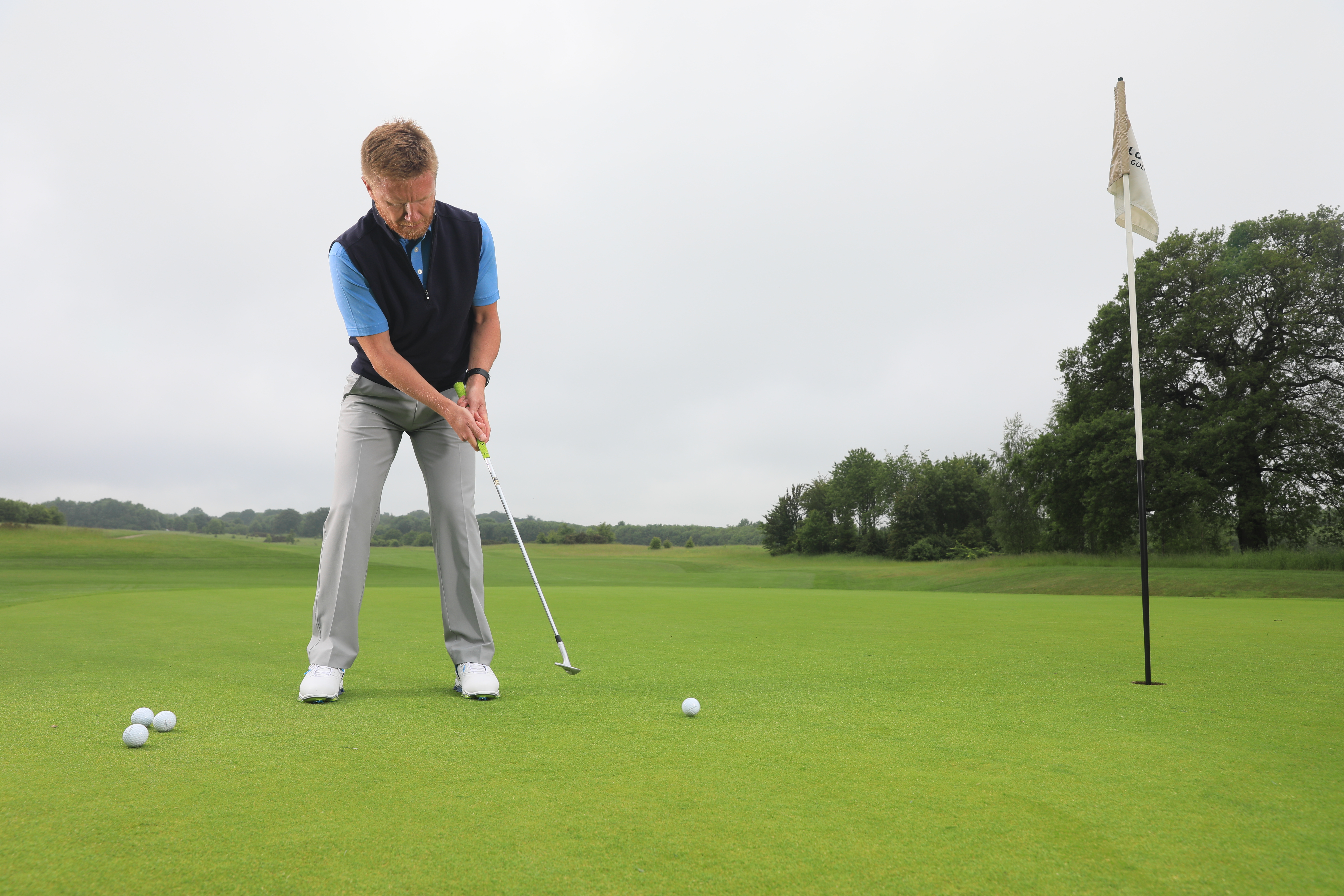
For this putting drill use your most lofted wedge and work on keeping your levels throughout the stroke to make sure you’re not coming down too steeply or up too aggressively through impact. It’s about hitting the equator of the ball with the leading edge. To do this, you must retain your posture through impact and the connection between your arms and body. If your arms are wandering about all it's likely that the leading edge won’t strike the equator. Obviously, you must take great care here, perhaps starting out off the green until you’ve got the hang of it.
Grip pressure consistency

Consistent grip pressure is key - even subtle pressure changes through the stroke can affect what the wrists and hands are doing. To add greater consistency, place a ball between your right or trail forearm and the putter grip. With the ball in place, you will feel pressure against your forearm which you should look to maintain during your stroke. If you do maintain it and keep the ball in place, the face will feel very stable. If you lose pressure in the backswing, the ball will fall out highlighting unwanted wrist and hand movement in your stroke.
Hone your roll

A good roll is key to putting consistently well. To see how well you’re rolling the ball on line, set up two alignment sticks to form a channel on a straight six-foot putt. Now add in a tee-peg gate somewhere between the ball and the end of the sticks. You can make it easier to start with via a wider gate closer to the ball but as you progress, move the gate further away and make it narrower as here to really test how well you’re rolling the ball.
Eyes over the ball

There are exceptions, but eyes over the ball is generally the best way to putt. If they're not, it’s difficult to see the line as you’re not looking directly down it. Stand too upright, for example, and the line is probably going to look like it’s going away from you more. If you’re struggling to tell whether or not your eyes are directly over the ball, invest in one of the mirrors you’ll see most pros using on tour. They often have lines on too, so if you put a line on your ball you can get a real feel for being perfectly lined up.
The arc drill

Place an alignment stick on some really long tees (o similar) so the stick is three or four inches in the air. You can use this on putts of up to three or four feet. Make your stroke, keeping both ball and putter underneath the stick. This will promote a shallower path to your stroke. If you knock the stick off, something has gone wrong either on the takeaway or follow-through. You’re looking for a saucer-shaped arc rather than a cup-shaped one and this drill encourages that.
Light grip pressure
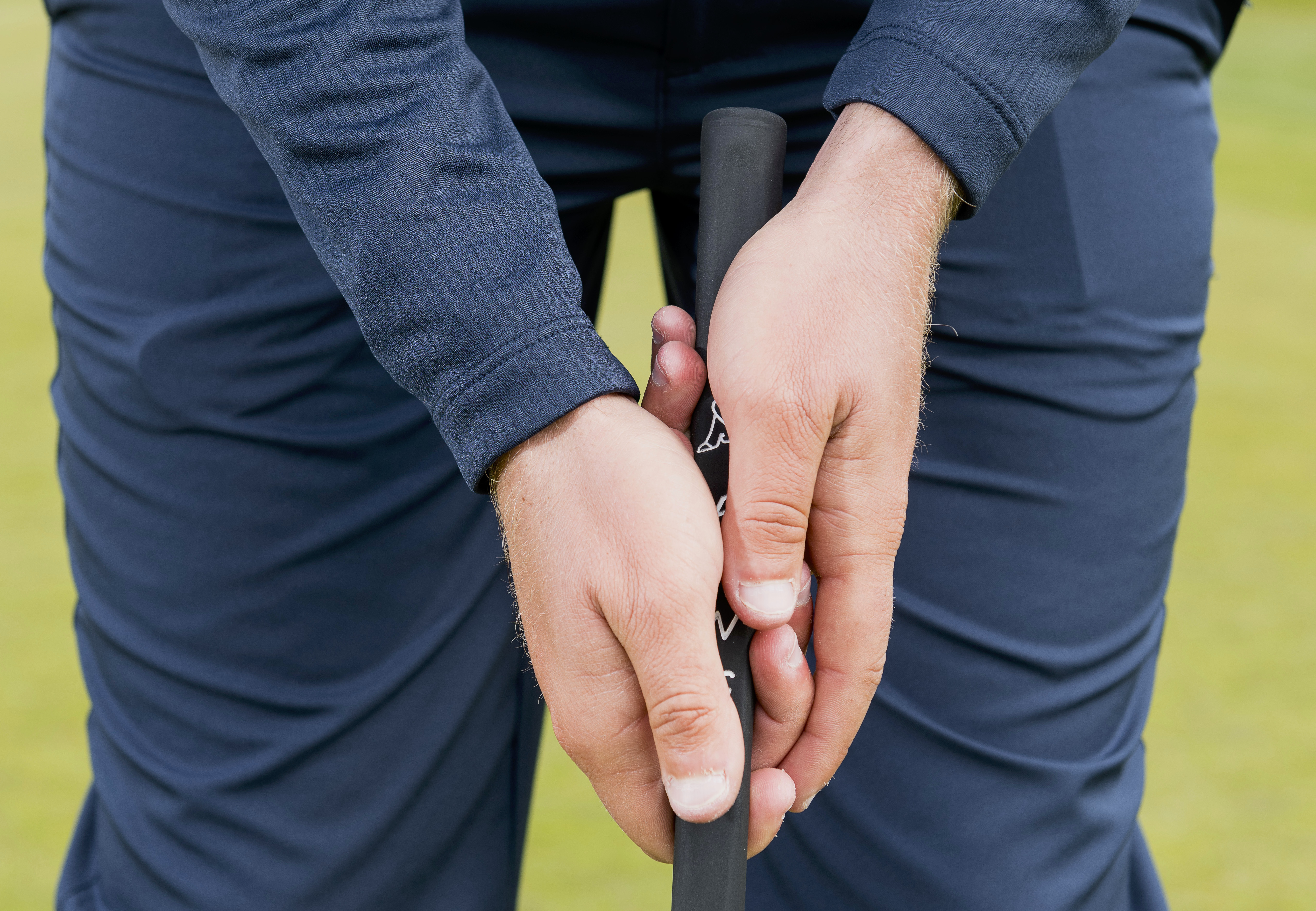
Grip pressure is very important in the putting stroke. When you’re feeling a bit anxious, it’s all too easy to grip too tightly, making it harder to get the putter moving the way you want it to through the stroke. To keep your rhythm and tempo, you must grip the putter lightly. Concentrate on lightness as you take your grip so that when you’re ready to go there’s no hint of tightness. Even in this still photo you can sense no tension in the hands.
The prayer drill
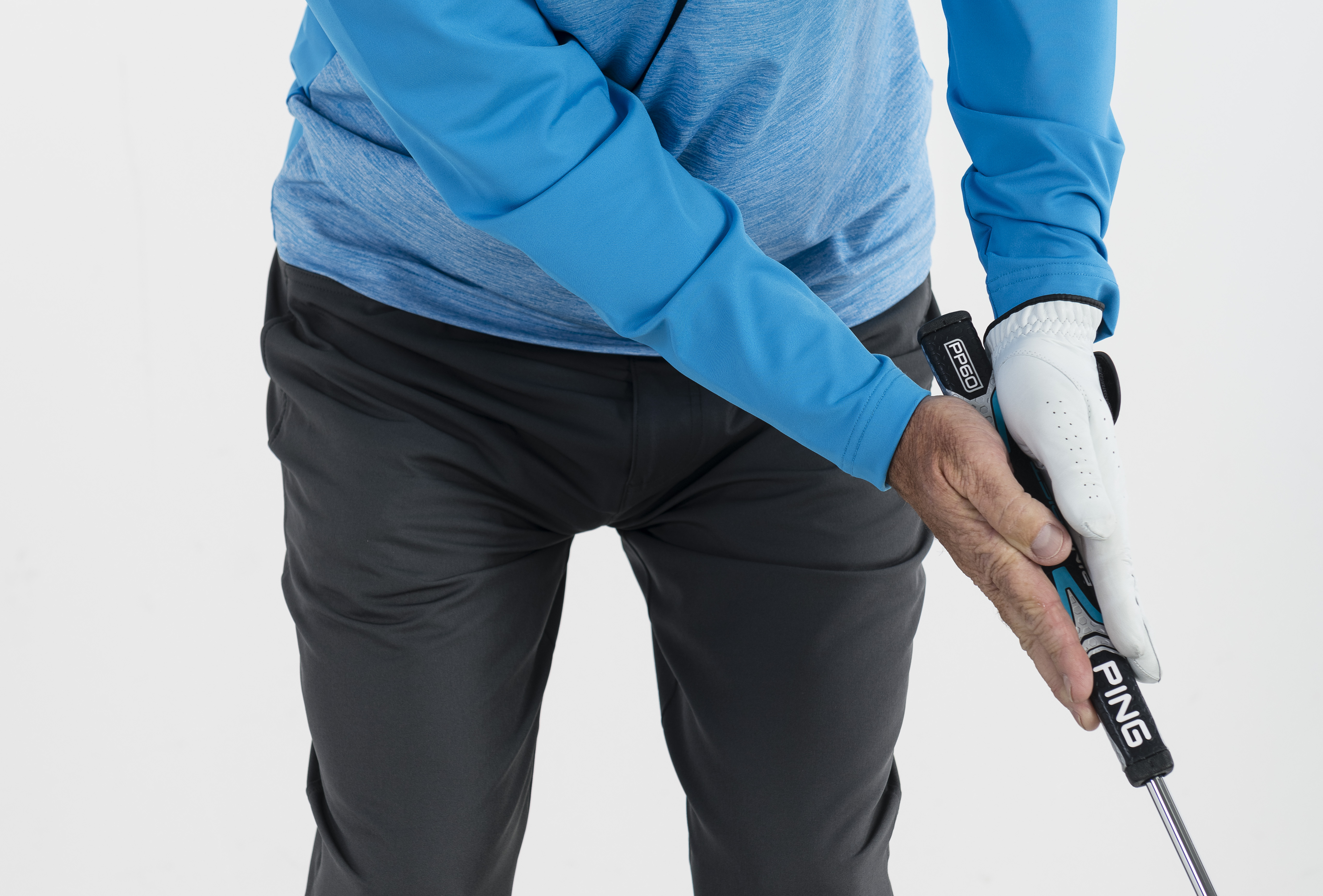
You need to get your hands working effectively through the ball and this prayer drill can really help on that front. Place both hands opposite each other either side of the grip and take practice strokes back and through. It will give you a real feel for how the hands and arms should be working together down the target line through the ball. When the wrists break down, it adds another variable to the mix that will lead to inconsistencies in strike and roll.
Ruler down the glove
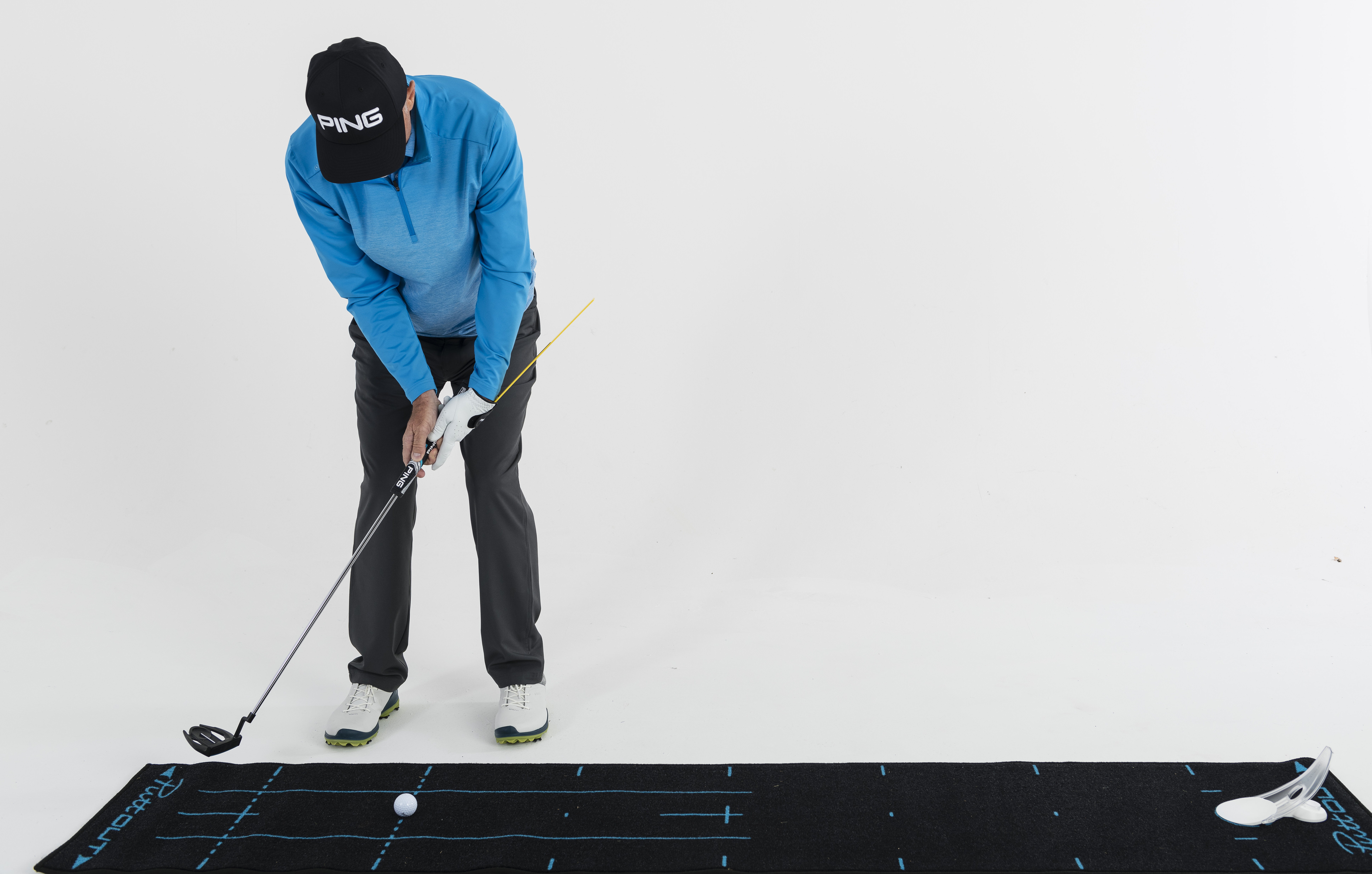
A mat like this, with various markings to assist with ball position, alignment and line, is a great idea for indoor practice. One of the main things that goes wrong in many people’s putting strokes is that the hands work independently of, and outpace, the arms through impact. One way to work on this is to place a plastic ruler inside the back of your glove as it will instantly alert you to any unwanted breakdown in the wrists either on takeaway (as illustrated here) or through the ball.
Get yourself connected
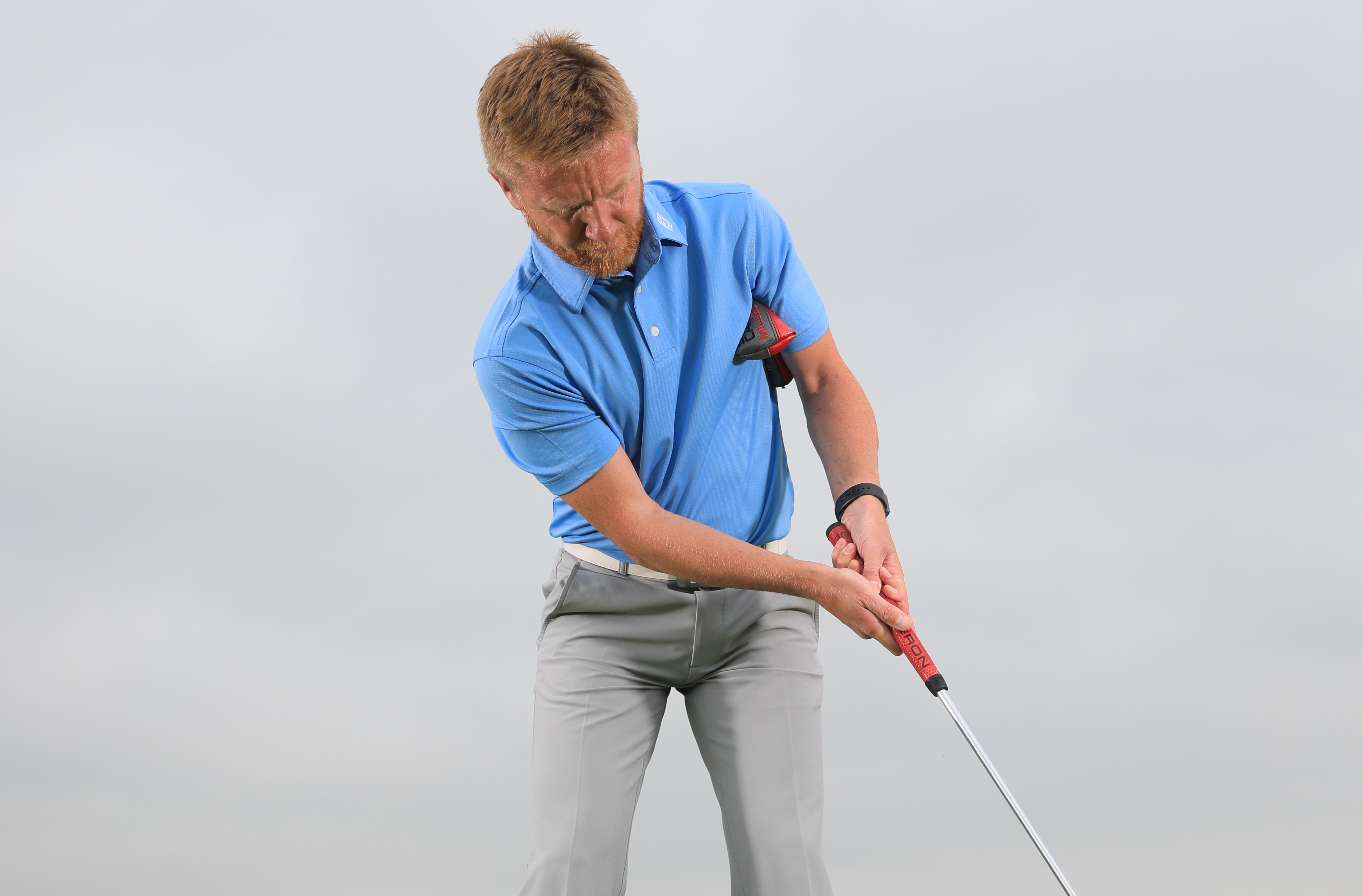
Putting a glove or putter cover under your left arm keeps everything connected, and when everything’s connected you get a more solid strike. The minute your arms separate from the torso, your strike wanders about all over the place. You need the big muscles of the shoulders and upper body working as one unit to prevent the small-twitch muscles from getting too involved. If the putter cover falls, you know you’ve become disconnected and your strike will suffer.
Final practice pre-round
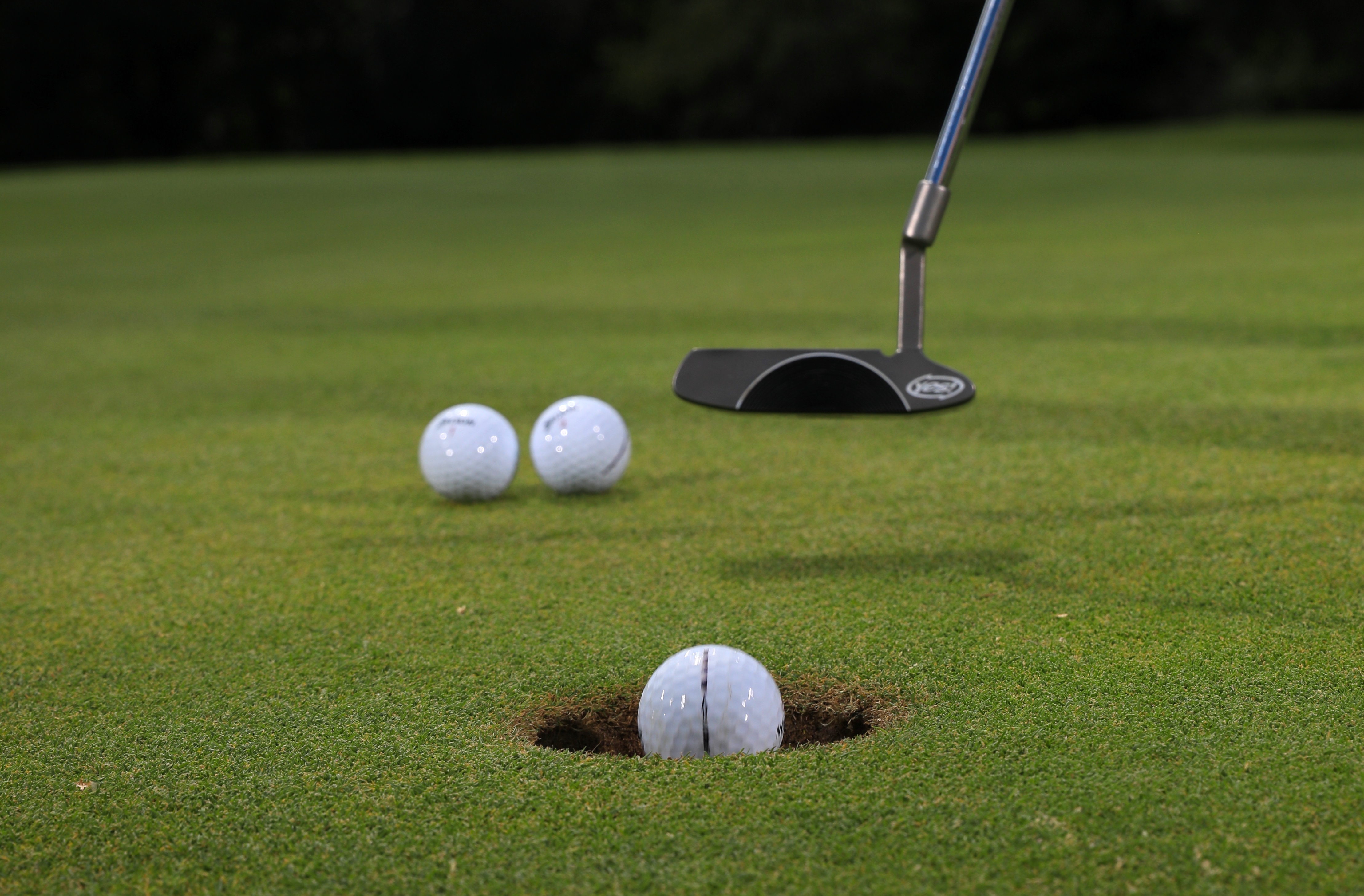
This is a great drill for the final minute before you head to the tee. Just knock three balls in from about 18 inches as it feels good to see the ball going in just before you tee off. Do this twice just before heading out to play. Tiger Woods used to do this all the time. If you hole a series of virtually unmissable 18-inch putts just before you head to the 1st tee, your last memory before you play will be the sight and sound of the ball going in the hole.
Take a step back
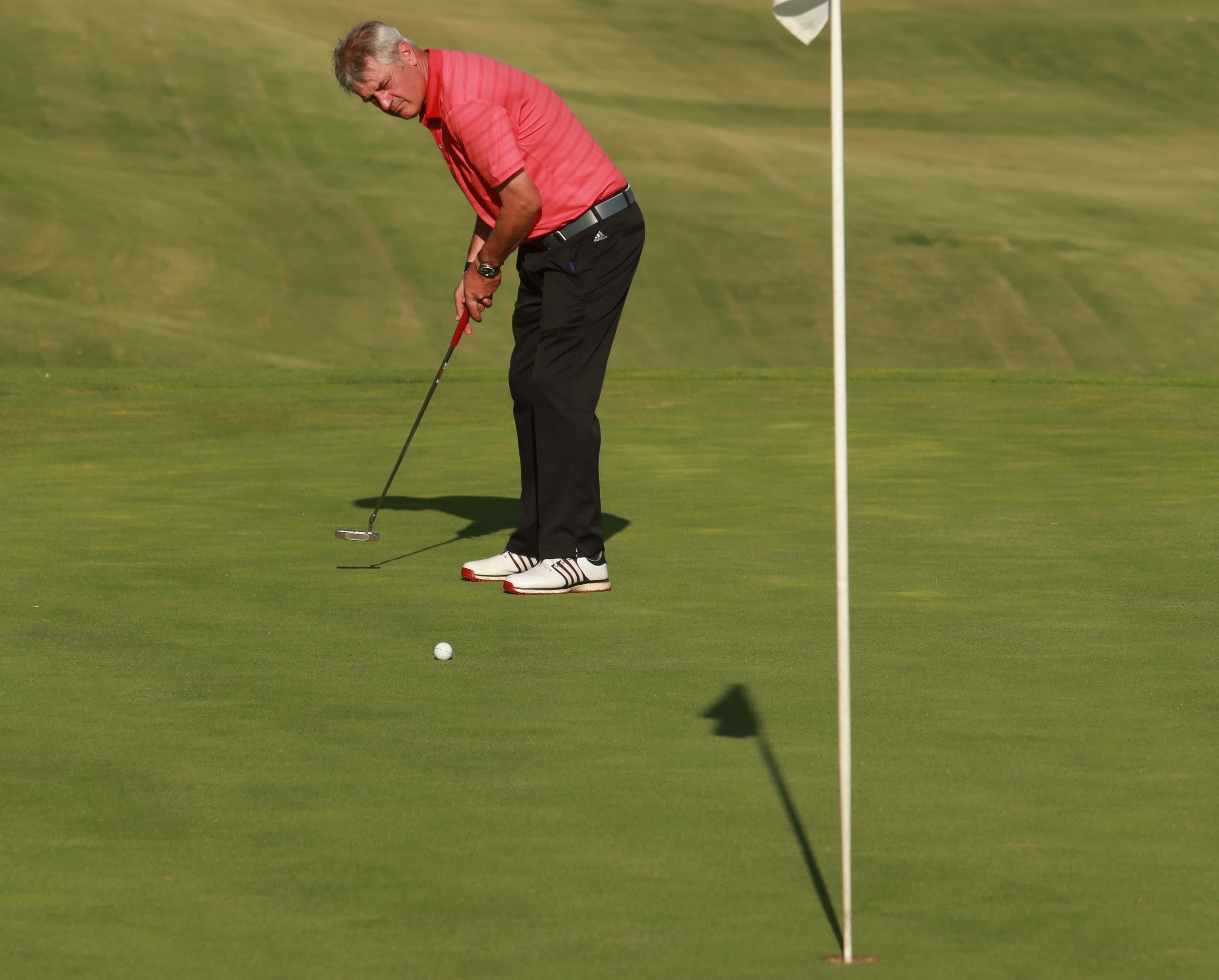
When club golfers are leaving putts short, they start messing around with the length or speed of their stroke, losing all their natural timing, rhythm and tempo. This very simple change of routine can help. If you’re leaving putts short, instead of having your practice strokes at the ball, just take a step back. You’re now kidding your brain into thinking that the putt is three feet longer. Do your normal pre-shot rehearsal, then walk straight in, look at the hole and fire. Try it – it works!
Listen for it to drop
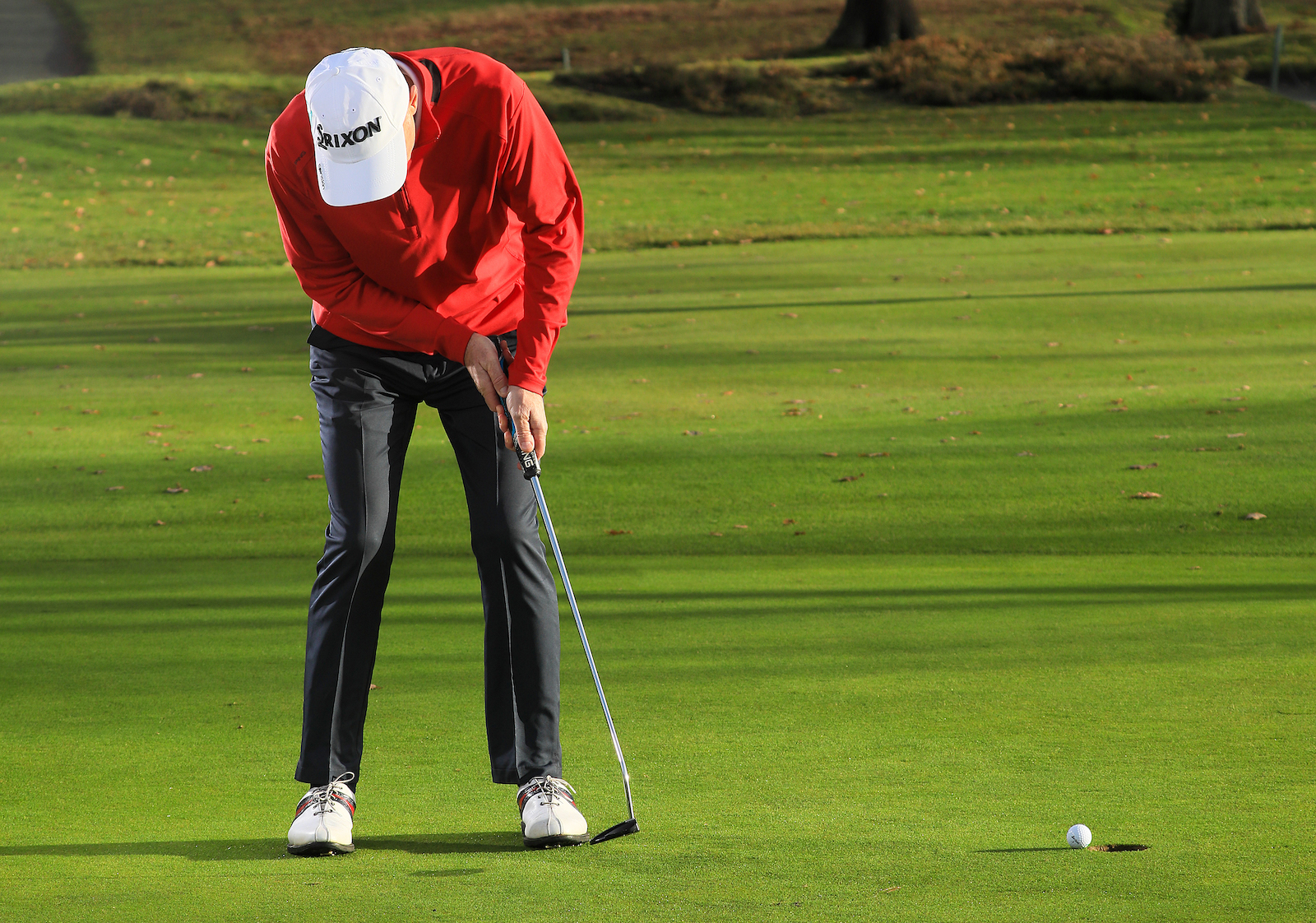
What your head does through the stroke is important and many golfers are guilty of looking up too early out of anxiety. Make sure you watch your putter go past your lead foot, because then you haven’t ‘looked for it’ too early. Count “one, two” and then hold the finish past the foot. If your eyes dart to the hole too soon, it inevitably leads too off-centre strikes and the putterface twisting offline. On short putts, try listening for your ball to drop rather than watching it.







